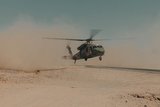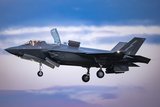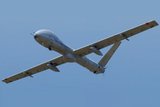Advances in HALE/MALE systems prove the sky is not the limit for drones
The PHASA-35 exceeds altitudes of 66,000 feet when in flight. (Photo: BAE Systems)
Threat detection and reaction times have never been more important on the battlefield and fleets of high-flying, long-lasting uncrewed aerial vehicle (UAV) units provide a critical early warning and communications network for modern-day militaries.
For today’s defence industry, client interest in expanding high- and medium-altitude, long-endurance (HALE/MALE) drone fleets is only growing stronger as competition between different geopolitical blocs heats up. The result has been a burst of new releases and industry collaboration as companies team up to benefit from one another’s strengths in different fields of expertise in this highly complex area.
Threat detection upgrades
In June, US-headquartered General Atomics
Already have an account? Log in
Want to keep reading this article?
More from Air Warfare
-
![F-35B delivery date slips to 2026, UK MoD confirms]()
F-35B delivery date slips to 2026, UK MoD confirms
The UK was originally set to receive all remaining aircraft by the end of 2025, although the MoD had previously forecast that deliveries could be delayed until April 2026.
-
![Lockheed assesses possible engine options for Vectis CCA development]()
Lockheed assesses possible engine options for Vectis CCA development
The Collaborative Combat Aircraft (CCA) was unveiled in September, with Lockheed pursing an accelerated roadmap to first flight in 2027.
-
![Singapore’s Hermes 900 buy to enhance multi-domain ISR capabilities]()
Singapore’s Hermes 900 buy to enhance multi-domain ISR capabilities
Drawing on its endurance and substantial payload capacity, the Hermes 900 would provide a boost to Singapore’s ISR capabilities, particularly in the maritime domain.





















